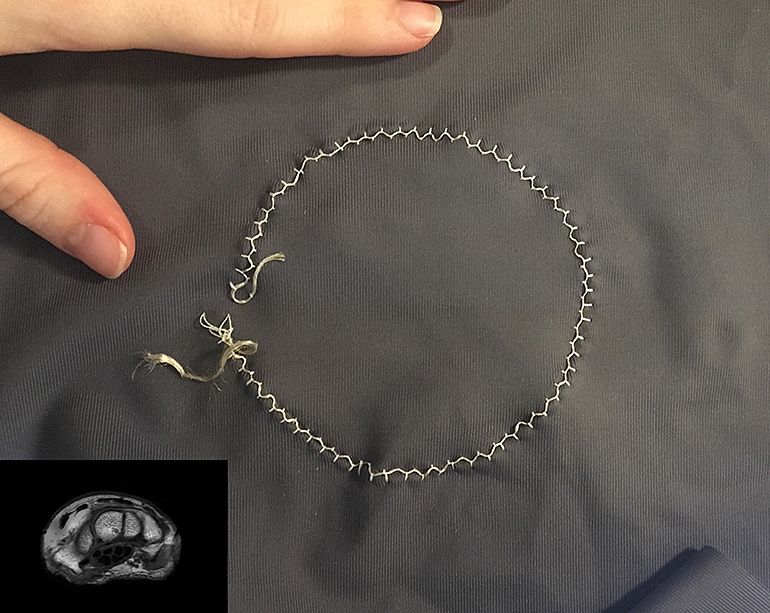When undergoing MRI scanning, many patients have to have the body parts being imaged strapped into rigid radio-frequency (RF) coils. These can be uncomfortable, as they’re not custom-sized for every patient, and since many MRI exams can take a half hour or more to perform, the scanning process can be difficult for many to undergo.
Researchers at Purdue University have now developed RF coils that can be flexed and stretched, and that may one day be used within wearable garments that would be worn during MRI exams. “Imagine going for an imaging session and they strap on a comfortable fabric with the coils embedded inside,” said Joseph Rispoli, one of the study authors and an assistant professor of biomedical engineering and electrical and computer engineering at Purdue. “We created an adaptable, wearable and stretchable fabric embroidered with conductive threads that provides excellent signal-to-noise ratio for enhanced MRI scanning.”
The new coils rely on conductive silver-coated threads that are stitched to a fabric. The threads are applied in an alternating pattern to create a zig-zag pattern that optimizes the signal to noise ratio.
Because the coil is pliable and can be placed close to the body, the imaging quality improves compared with rigid one-size-fits-all devices. MRI imaging of breasts may be particularly impacted, as those organs tend to be of different sizes and densities.
So far, only basic imaging has been attempted using the new coils, but the results are promising already. “Our preliminary results show a full-scale device will be superior in all aspects of diagnostic testing, including increased sensitivity and fewer false positives,” Rispoli said.
Some study results when using a 3 Tesla scanner, according to the abstract in journal IEEE Transactions on Biomedical Engineering:
SNR [signal to noise] calculations show that this stretchable coil design is comparable to a flexible, standard PCB coil with a 13-30% decrease in SNR depending on stretch degree and direction. In vivo human wrist images were obtained using the stitched coil.
Despite the reduction in SNR for this combination of material, there is a reduced percentage of SNR drop as compared to existing stretch coil designs. These imaging results and calculations support further experimentation into more complex coil geometries.
This coil is uniquely stretchable in all directions, allowing for joint imaging at various degrees of flexion, while offering the closest proximity of placement to the skin. The materials provide a similar level of comfort to athletic wear and could be incorporated into coils for a variety of anatomies.
Story Source:
Medgadget. Note: Content may be edited for style and length.

